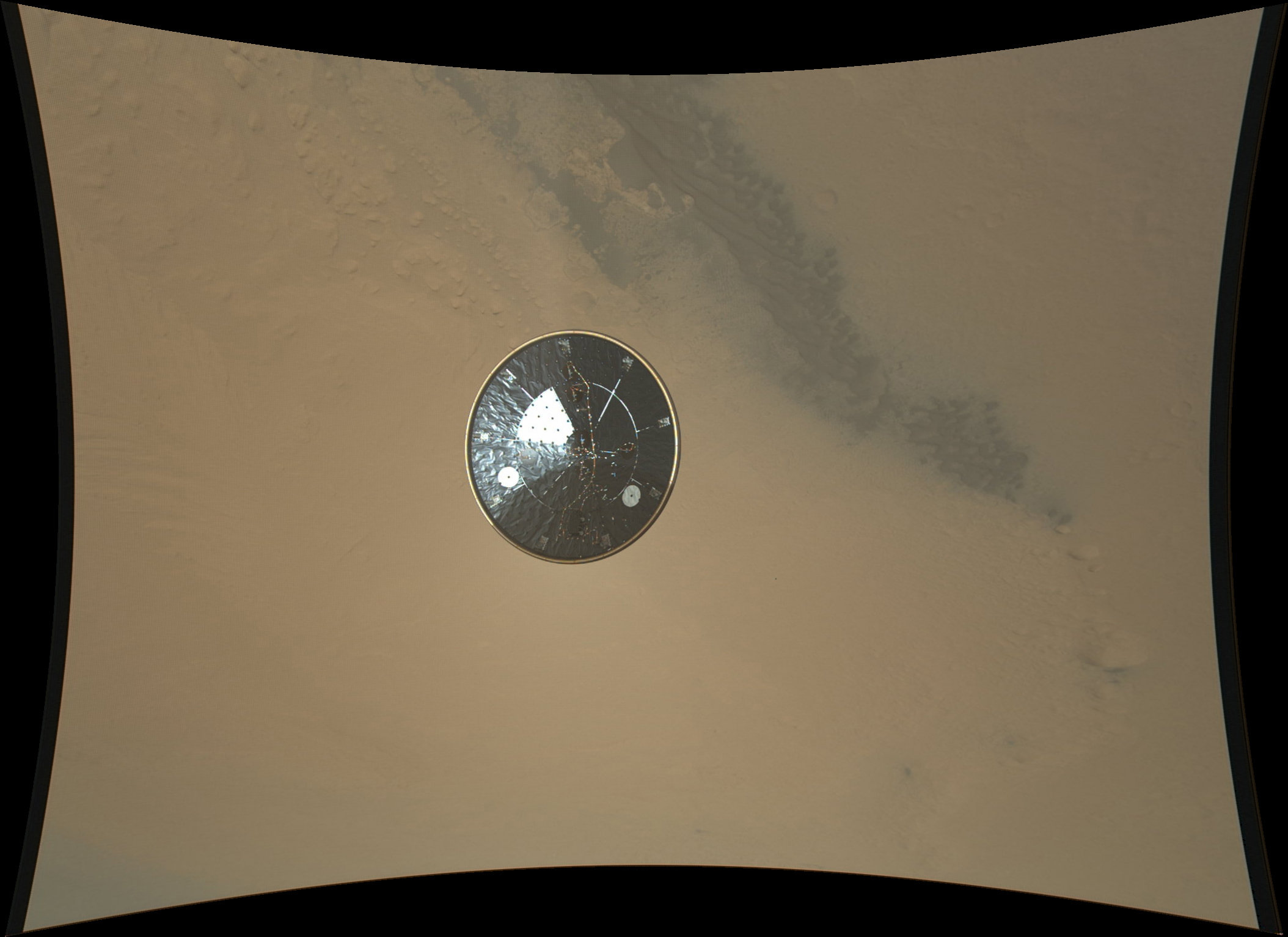
A spectacular new video shows the Mars rover Curiosity's harrowing Red Planet landing in sharp detail, while another captures the drama and excitement surrounding the historic Aug. 5 event.
The first video — taken by Curiosity's Mars Descent Imager camera, or MARDI — gives a rover's-eye view of the daring touchdown. NASA released a low-resolution version of this one just hours after the rover's landing; at the time, MARDI principal investigator Mike Malin promised the full-frame video would be "exquisite."
And indeed it is.
The high-definition video chronicles the final 2.5 minutes of Curiosity's 7-minute plunge through the Martian atmosphere in real time, starting just after the rover jettisoned its heat shield. The first few seconds show the heat shield falling away toward the red dirt of Gale Crater far below. [Video: Curiosity's Landing in High Resolution]
Other milestones follow, such as parachute deploy and ignition of the engines on Curiosity's "sky crane" descent stage, which lowered the 1-ton rover to the Martian surface on cables. Audio from mission control at NASA's Jet Propulsion Laboratory (JPL) in Pasadena, Calif., plays over the video, describing the nail-biting action.
As Curiosity nears the Martian surface, huge dust clouds billow around the $2.5 billion robot, kicked up by the sky crane's rockets. Then the view clears to show a close-up, static shot of scattered pebbles.
"Touchdown confirmed! We're safe on Mars!" Curiosity entry, descent and landing operations lead Al Chen announces, and deafening cheers erupt in the control room.
Get the Space.com Newsletter
Breaking space news, the latest updates on rocket launches, skywatching events and more!
The second NASA video documents similar emotional outbursts from the crowds of onlookers that gathered at various places around the country to watch the Mars rover landing.
Over the course of 3.5 minutes, the scene shifts from mission control at JPL to other NASA sites, such as Ames Research Center in Moffett Field, Calif., Goddard Space Flight Center in Greenbelt, Md., and Johnson Space Center in Houston.
The video also captures the atmosphere at New York City's Times Square, The Planetary Society's Planetfest 2012 event in Pasadena and the Denver Museum of Nature and Science, among other places.
When Chen confirms the successful touchdown, these audiences cheer and clap wildly as well, showing how Curiosity's bold and unprecedented landing attempt had riveted millions of people around the country.
"Wow! This brings out the best in us!" Planetary Society CEO (and former TV "Science Guy") Bill Nye exclaimed at Planetfest, to deafening and sustained applause.
The good news has continued after landing for Curiosity, whose main task is to investigate whether Mars could ever have supported microbial life. While scientists are still checking out the rover and its 10 science instruments, everything is working well so far.
Curiosity has already snapped thousands of photos, taken a variety of science measurements and gone on a short test drive on the floor of Gale Crater. The rover could be ready to make its first big move — toward a science target researchers have dubbed Glenelg — within the next week or so, team members have said.
Follow SPACE.com senior writer Mike Wall on Twitter @michaeldwall or SPACE.com @Spacedotcom. We're also on Facebook and Google+.
Join our Space Forums to keep talking space on the latest missions, night sky and more! And if you have a news tip, correction or comment, let us know at: community@space.com.

Michael Wall is a Senior Space Writer with Space.com and joined the team in 2010. He primarily covers exoplanets, spaceflight and military space, but has been known to dabble in the space art beat. His book about the search for alien life, "Out There," was published on Nov. 13, 2018. Before becoming a science writer, Michael worked as a herpetologist and wildlife biologist. He has a Ph.D. in evolutionary biology from the University of Sydney, Australia, a bachelor's degree from the University of Arizona, and a graduate certificate in science writing from the University of California, Santa Cruz. To find out what his latest project is, you can follow Michael on Twitter.









